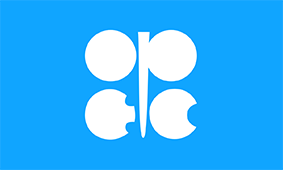
Oil Market Forecasters Bearish on 2019


The US Energy Information Administration envisages global demand growth in 2019 rising by 1.49 million bpd to 101.45 bpd, higher than its peers, but its estimate for supply growth is near 2 million bpd, Platts reported.
The market is expected to be in deficit by almost 500,000 bpd in 2019, according to the EIA, as output from OPEC/non-OPEC deal participants and Canada, factoring in sanctions on Venezuelan and Iranian oil flows, will not be enough to offset US supply growth.
The Paris-based International Energy Agency expects oil consumption in 2019 to rise to 100.6 million bpd from 99.2 million bpd last year, growth of 1.4 million bpd.
Unlike other agencies, it sees global demand growing faster this year than in 2018 due to "lower prices and the start-up of petrochemical projects in China and the US."
The IEA, however, said oil markets will still struggle to absorb fast-growing non-OPEC supply despite sanctions on Iran and Venezuela and falling OPEC production in 2019.
In terms of oil demand growth, OPEC was the most bearish in its monthly oil market report, predicting a rise of only 1.24 million bpd, with global consumption at 100 million b/d this year.
The continued strong growth of US shale oil will soften the blow from the recent US sanctions on Venezuela's state-owned oil company PDVSA, the IEA said.
"Even so, headline benchmark crude oil prices have hardly changed on news of the sanctions," the IEA said in its recent monthly market report. "This is because, in terms of crude oil quantity, markets may be able to adjust after initial logistical dislocations."


Trump weighs using $2 billion in CHIPS Act funding for critical minerals

Codelco cuts 2025 copper forecast after El Teniente mine collapse

Electra converts debt, launches $30M raise to jumpstart stalled cobalt refinery

Barrick’s Reko Diq in line for $410M ADB backing

Abcourt readies Sleeping Giant mill to pour first gold since 2014

Nevada army depot to serve as base for first US strategic minerals stockpile

SQM boosts lithium supply plans as prices flick higher

Viridis unveils 200Mt initial reserve for Brazil rare earth project

Tailings could meet much of US critical mineral demand – study

Kyrgyzstan kicks off underground gold mining at Kumtor

Kyrgyzstan kicks off underground gold mining at Kumtor

KoBold Metals granted lithium exploration rights in Congo

Freeport Indonesia to wrap up Gresik plant repairs by early September

Energy Fuels soars on Vulcan Elements partnership

Northern Dynasty sticks to proposal in battle to lift Pebble mine veto

Giustra-backed mining firm teams up with informal miners in Colombia

Critical Metals signs agreement to supply rare earth to US government-funded facility

China extends rare earth controls to imported material

Galan Lithium proceeds with $13M financing for Argentina project

Kyrgyzstan kicks off underground gold mining at Kumtor

Freeport Indonesia to wrap up Gresik plant repairs by early September

Energy Fuels soars on Vulcan Elements partnership

Northern Dynasty sticks to proposal in battle to lift Pebble mine veto

Giustra-backed mining firm teams up with informal miners in Colombia

Critical Metals signs agreement to supply rare earth to US government-funded facility

China extends rare earth controls to imported material

Galan Lithium proceeds with $13M financing for Argentina project

Silver price touches $39 as market weighs rate cut outlook

















